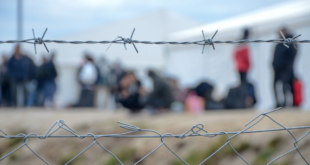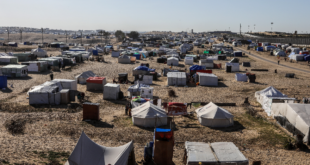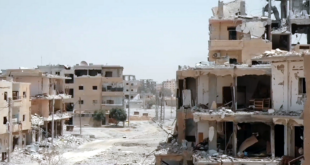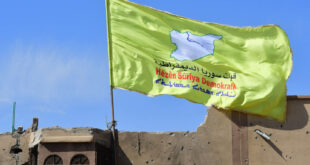
Why did someone pitch the Jewish Chronicle now?
Ever since Iran’s military nuclear program chief Mohsen Fakhrizadeh met his end in a daring assassination and hail of bullets on November 27, the world has been wondering how, exactly, it happened.
Although a report in the Jewish Chronicle (JC) late Wednesday claims to have the definitive account, the world may need to wait a bit longer.
As interesting as it is exploring the pros and cons of the account given by the JC, there is another question: who had an interest in providing these details, what was that interest, and why now?
While some of this review involves deconstructing and raising doubts about aspects of the JC report, there is no doubt that the reporter, Jake Wallis Simons, did some serious journalism and research, and genuinely believes what his source(s) told him.
That said, multiple Israeli sources shed significant doubt on various aspects of the report.
There has been an ongoing battle of narratives on whether an Israeli team on the ground assassinated Fakhrizadeh up close, or whether a next-generation satellite remote-controlled gun took him down from long range with no Israelis in sight.
According to the JC, the answer is splitting the difference: there were many Israelis on the ground, but they also used a remote-controlled gun, though not one operated by satellite.
The Post previously confirmed foreign reports (unlike the JC, the Post is under the restriction of the Israeli censor) that Israelis were involved and on the ground, without a definitive conclusion on what kind of remote gun may have also been involved.
Based on the Post’s research, it is still unclear whether a remote gun was used along with the Israeli boots on the ground.
There is no question that an initial and false Iranian narrative of a remote satellite-controlled gun with no Israelis on the ground was pushed by Tehran to cover its failure to catch the assassins.
However, confirming the exact details and taking more credit in this sensitive political climate – when Israel is hoping to coax the US to listen to its views while hoping the Islamic Republic will not retaliate too severely – is not something the Mossad itself would do.
Moreover, Mossad officials would not likely take explicit credit for the deep penetration of al-Qaeda and the IRGC in Iran.
Generally, the report does not attribute to Mossad sources, but rather to sources familiar with the operations details or anonymous sources or international sources.
It is unlikely that the JC received significant material directly from Mossad sources simply because the spy agency rarely speaks to foreign journalists, and when it speaks to any journalist it is usually in-person or with journalists with whom it has a long-term relationship.
“My story is 100% accurate,” Simons told the Post. He said he was very confident about his sources, but did not give any indication that his sources were from the Mossad itself.
For a journalist with a background of working for the Daily Mail, it would be far more reasonable that his sources would come from British intelligence, or from other British officials who may have heard second-hand accounts of the operation.
Such a foreign intelligence agent might also be responsible for the slight semantic inaccuracy of referring to Mossad division heads as “brigadier-generals,” when the equivalent Israeli army rank would be”major-generals” or “aluf.”
For journalists working with spy sources, meeting a source in person can also help determine how much of what is being said is truthful, and how much is part of a complex psychological warfare game.
There are other incongruities, besides the idea that the Mossad would not boastfully draw attention to these details now.
In the one instance where the JC comes close to suggesting direct information from the Mossad, it says: “Senior Mossad figures privately believe that the breakout time is closer to five years, the JC can reveal.”
This would not be a view expressed by current senior Mossad officials, who would find such an assertion outrageous.
Rather, the Post has learned that they view the longest timeline for Iran obtaining a nuclear bomb at two years, like IDF intelligence chief Tamir Heiman said this week, or much shorter, as some Iran nuclear experts have asserted.
Regarding the impact on Tehran losing Fakhrizadeh, the Post previously reported that the loss was massive, and the JC report does a strong job giving the reader a feel for the impact of that loss.
However, the idea that his death would set back the Islamic Republic six years as the JC reports is seen by Mossad officials as off the mark.
Strong points in the JC story are its revealing of March 2020 and the eight month process leading up to the November operation, as well as confirming earlier Jerusalem Post reports about the Mossad’s strategy to convince the Biden administration of its views using clean depoliticized intelligence.
So who would be pushing this story, and why now?
If it is a British official, any European official, or any US official, the answer is easy: the story’s multiple mention of the loss of Fakhrizadeh pushes out the nuclear timeline to five years.
If Iran is five years away from a nuclear bomb, then why is Israel getting so excited? What would be wrong with the US and the EU-3 (Germany, France, and the UK) getting back the nuclear deal as it was in 2015? There are five more years at least before anyone needs to worry.
This is not the Israeli playbook, and definitely not the current Mossad’s playbook, where the emphasis is that there is enough time for the US not to have to rush back into the deal before Iran’s June election, but nowhere near five years that would take away any sense of urgency.
 Eurasia Press & News
Eurasia Press & News



